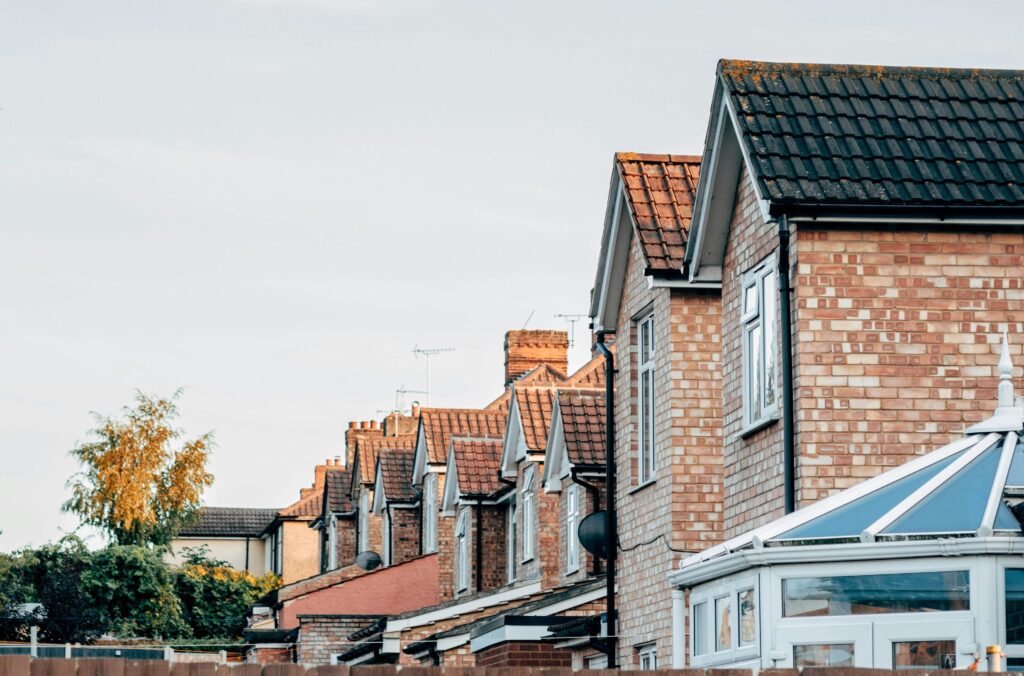When it comes to providing accommodation for individuals in need of care, two common terms often come up: supported living and care homes in UK. At first glance, they might seem quite similar—both offer a safe and structured environment for vulnerable individuals. But the reality is, they operate under very different models, each with its own planning requirements, regulatory framework, and design considerations.
If you’re a developer, investor, or property owner considering such a project, understanding these differences is not just helpful—it’s essential. The type of care provided, the level of independence granted to residents, and the planning permissions required all vary significantly. In this article, we’ll break down what sets care homes apart from supported living, explore how planning regulations differ, and help you determine which model is the right fit for your project. Whether you’re looking to convert an existing property or develop a new care facility, getting the planning right from the start will save time, money, and potential regulatory headaches.

What Is a Care Home? Understanding the Role, Regulations, and Planning Requirements
When exploring housing options for individuals who need consistent care, care homes serve as essential facilities that offer structured and fully managed living environments. These residences are specifically designed for those who require round-the-clock supervision and assistance, including older adults, individuals with significant physical disabilities, and people with cognitive conditions like dementia.
Unlike supported living arrangements, where individuals maintain a level of independence while receiving external or part-time support, care homes offer round-the-clock care within a fully regulated environment. This distinction is important, not only from a healthcare and operational perspective but also when it comes to planning and property development considerations.
Developing or converting a property into a care home requires an understanding of regulatory requirements, planning permissions, and facility design considerations.
Care Homes and Their Use Class
When planning a care home development, one of the most crucial factors to consider is its planning use class and associated regulations. In the UK, every property falls under a Use Class, which determines what it can legally be used for. For those unfamiliar with the concept, Use Classes are part of the Town and Country Planning (Use Classes) Order, which categorises buildings based on their intended function.
If you’re new to planning or want a deeper understanding of Use Classes and their impact on property development, check out our comprehensive guide here: A Complete Guide to the Planning Use Class Order
Now, let’s explore how care homes fit into this framework and what planning considerations developers need to keep in mind.
In the UK, care homes are classified under Use Class C2 (Residential Institutions). This designation applies to properties that not only provide accommodation but also offer care services to residents who require some level of personal assistance, medical supervision, or specialist support.
Unlike standard residential housing, care homes are designed for individuals who cannot live independently and need varying degrees of professional care. The C2 classification ensures that these facilities meet specific planning and operational standards tailored to the complex needs of of vulnerable residents.

Types of Establishments That Fall Under Use Class C2
A C2 property classification applies to facilities within the healthcare and social care sectors, offering accommodation and specialised support for individuals with ongoing care needs. These properties serve various purposes, with some of the most common types including:
- Nursing Homes – These facilities offer specialised medical care along with personal support, catering to individuals with chronic illnesses, disabilities, or complex health conditions. Residents receive 24/7 medical supervision and assistance from trained nursing professionals to ensure their well-being and manage their healthcare needs effectively.
- Residential Care Homes – Unlike nursing homes, these facilities primarily provide assistance with daily living tasks rather than extensive medical care. They support elderly individuals, people with disabilities, and those with cognitive conditions such as dementia, helping them with essential activities like eating, dressing, and mobility to promote a comfortable and independent lifestyle.
- Hospices – These facilities focus on palliative and end-of-life care, providing a compassionate and supportive setting for individuals with terminal illnesses. Their primary goal is to ensure comfort, dignity, and effective pain management, helping patients and their families navigate this stage with care and respect.
Care Home Facilities: Key Design and Operational Considerations
Turning a building into a fully functional and welcoming care home isn’t just about meeting regulations—it’s about creating a space where people feel safe, cared for, and at home. A well-designed care home should balance practicality and comfort, ensuring that residents can move around easily, engage in social activities, and receive the care they need in a dignified way.
Care homes require a completely different setup compared to regular houses. They must be designed to accommodate wheelchairs and mobility aids, have staff available around the clock, and follow strict fire safety and emergency protocols to ensure resident well-being. If you’re considering transforming an existing property into a care home, you will likely need Change of Use planning permission. This process involves careful planning, adherence to regulations, and expert guidance to ensure the facility meets all necessary standards. If you’re unsure about how this works, our in-depth guide explains why working with an architect can streamline your planning journey and save you from unnecessary setbacks: Why Hiring an Architect Can Help with Planning & Change of Use Projects
So, what exactly makes a care home different from a regular house or flat? Let’s dive into the key features that every care home needs and why they matter.

1. Accessibility and Safety: More Than Just Ramps and Railings
When designing a care home, accessibility isn’t just a nice-to-have—it’s a must. Many residents have mobility issues, visual impairments, or conditions like dementia, which means every single part of the building should be easy to navigate and free of hazards.
Imagine this: an elderly resident wants to move from their bedroom to the dining area. If doorways are too narrow, flooring is uneven, or there’s a single unexpected step, this simple journey can become frustrating, dangerous, or even impossible. That’s why care homes need extra-wide corridors, non-slip flooring, and step-free access throughout the building.
Handrails along hallways, easy-to-reach light switches, and motion-sensor lighting at night can make all the difference in helping residents feel safe and independent.
And let’s talk about bathrooms—one of the most accident-prone areas in any home. Care home bathrooms must be designed with grab bars, emergency pull cords, and wheelchair-friendly layouts so that residents can use them safely and comfortably.
2. Communal Spaces: Making a House Feel Like a Home
A care home should foster a sense of community, not isolation. For older adults, social interaction is vital, and well-planned communal spaces can significantly enhance their emotional and mental well-being.
Picture a spacious, sunlit lounge with cozy seating, a peaceful garden where residents can unwind and enjoy nature, and a dining area designed to encourage conversation over meals. These shared spaces do more than provide a place to gather—they create an environment where residents can connect, participate in group activities, and engage in hobbies, from movie screenings and fitness sessions to creative arts and crafts.
For individuals with dementia or sensory challenges, having designated quiet areas or sensory rooms can help create a soothing atmosphere, minimising anxiety and sensory overload. To further support residents, many care homes integrate colour-coded hallways and recognisable landmarks, making it easier for them to navigate their environment independently and with confidence.
Having access to outdoor space can make a significant difference in residents’ well-being. A secure, well-designed garden, even if compact, allows individuals to experience nature, engage in light physical activity, and breathe in fresh air. Many planning authorities view outdoor areas positively when assessing applications, as research shows that green spaces contribute to a better quality of life for care home residents.
3. Fire Safety and Emergency Preparedness: Because Every Second Counts
One thing that sets care homes apart from regular homes is the strict fire safety regulations. And rightly so—many residents may struggle to evacuate quickly in an emergency, which means the building itself needs to be designed with early detection and rapid response systems.
This includes:
–Smoke detectors and fire alarms in every room
-Fire-resistant doors to slow the spread of flames
–Emergency lighting to guide residents to exits
–Clearly marked escape routes and evacuation plans
And let’s not forget the staff—proper training is key. Every care home must have detailed emergency procedures, with staff trained to assist residents safely in case of a fire or evacuation.
Neglecting fire safety doesn’t just put lives at risk—it can also lead to planning permission delays or outright refusals. If a proposed care home fails to meet fire safety standards, planning authorities won’t approve the application, so it’s something that needs to be built into the design from day one.
Ultimately, a care home is more than just a facility—it should be a comfortable, secure, and supportive environment where residents feel at home. Creating a space that genuinely meets their needs requires careful design, strategic planning, and professional expertise, ensuring both functionality and a high quality of life for those who live there.
Before you jump into a care home conversion or development, it’s always a good idea to seek pre-planning advice. Many developers overlook this step, only to face unexpected rejections, costly redesigns, and delays later in the process.
Need help with pre-planning? Check out our page to more information: Pre-Planning Advice.

What Is Supported Living? Understanding the Concept and Who It’s For
For many people who need extra support in daily life, the idea of moving into a care home might not feel like the right fit. They may require assistance with certain tasks, but they still want to maintain a level of independence and control over their lives. This is where supported living comes in—a flexible and person-centred approach that bridges the gap between full-time residential care and independent living.
Supported living is not just about supporting people having a place to stay; it’s about creating an environment where people can thrive while receiving the right amount of support for their needs. Whether it’s help with cooking, managing finances, or personal care, supported living is designed to empower individuals rather than restrict them.
But what exactly does this mean in practice? And who is supported living for? Let’s take a closer look.
How Does Supported Living Work?
Unlike a care home, where residents receive round-the-clock care in a shared setting, supported living focuses on providing assistance within an individual’s own home. This could be:
– A self-contained flat or apartment within a supported housing scheme
– A shared house with other individuals who also receive support
– A specially adapted unit within a larger residential complex
The key difference? The person receiving care is a tenant in their own right. They either rent or own their home, giving them more autonomy and control over their space compared to a traditional care home. The level of support is tailored to the individual’s needs—some people may require just a few hours of help each week, while others may need 24/7 assistance.
One of the key benefits of supported living is its adaptability. The level of support provided can be adjusted based on an individual’s changing needs. For example, someone recovering from an injury may require short-term intensive care, while individuals with lifelong conditions might need consistent, long-term support tailored to their daily routines.
The goal is simple: to promote independence while ensuring safety, well-being, and access to necessary support services.
The question now is: how does supported living fit into planning and property development? The answer lies in Use Class regulations, planning applications, and design considerations, which we’ll explore in the next section.

Planning Considerations for Supported Living Developments
Creating a supported living scheme involves more than just selecting a suitable property—it requires a thorough understanding of planning regulations, obtaining the necessary approvals, and designing an environment that caters to residents’ specific needs. Unlike care homes, which are clearly categorised under Use Class C2 (Residential Institutions), the planning classification for supported living developments can be more nuanced and requires careful consideration.
So, what exactly do developers and property owners need to consider before starting a supported living project? From Use Class classifications to planning application requirements and community impact assessments, let’s break down the key factors involved in bringing a successful supported living development to life.
What Is the Use Class for Supported Living? C3 or Sui Generis?
One of the biggest planning questions surrounding supported living is: What Use Class does it fall under? The answer depends on how the scheme is structured and operated.
C3 (Dwellinghouses) – Standard Residential Use
Supported living developments often fall under Use Class C3, the same category as a regular home. This is because, in many cases:
Residents rent or own their home, just like any other tenant.
The property is used as a self-contained dwelling, rather than an institution.
Support is provided separately from the housing itself, often by external care providers.
This applies to situations where a small number of individuals live independently within their own flats or shared houses, even if they receive visits from support workers. If the accommodation closely resembles a normal residential setup, it is usually classified under C3(b), which covers shared housing for up to six people who require care or support.
Sui Generis – A Unique Use Class for Specialist Accommodation
However, some supported living schemes do not fit neatly into C3 and may instead be classified as Sui Generis (a use class for unique properties that don’t fit standard categories).
This typically happens when:
The level of service users on-site support is high, with staff available 24/7.
The accommodation is heavily adapted for specialist needs (e.g., fully supervised settings, medical treatment areas, or intensive behavioural support).
The scheme operates more like a care facility rather than traditional housing.
For example, a supported living scheme that caters to residents with complex disabilities requiring full-time assistance may not be classified as C3 and would likely need a separate planning application under Sui Generis.

What Do Local Authorities Look for in Planning Applications?
When assessing a planning application for a supported living development, local councils consider a range of factors to ensure the scheme is suitable for both residents and the wider community. Some of the key areas of focus include:
1. Impact on the Surrounding Area
One of the first things planning officers will assess is whether the development is appropriate for its location. Supported living schemes should ideally be integrated into residential areas, allowing residents to feel part of the community while still accessing the support they need.
However, councils may raise concerns if:
- The development significantly alters the character of the neighbourhood.
- There are objections from local residents regarding noise, safety, or parking.
- The property was previously used for a different purpose (e.g., a commercial building being converted into housing).
For developers, it’s important to engage with the local community early, addressing concerns and demonstrating how the development will have a positive impact.
2. Accessibility to Public Services and Transport Links
Supported living accommodation should be conveniently located with access to:
–Healthcare facilities, or community services such as GP surgeries, hospitals, or specialist care centres.
–Public transport, allowing residents to travel independently when possible.
–Shops and essential services, enabling residents to maintain a level of self-sufficiency.
If a site is too isolated, planning permission may be harder to secure. Local authorities prefer developments that allow residents to engage with the wider community rather than being placed in remote locations with limited amenities.
3. Parking and Infrastructure Considerations
Even though many supported living residents don’t drive, planning officers will still assess parking requirements based on:
- The number of staff members and visitors needing parking spaces.
- The potential impact on local traffic and residential streets.
- Whether there is adequate disabled parking for those with mobility impairments.
Some councils have strict parking policies, so developers must demonstrate that their plans will not cause congestion or inconvenience to the local community.
4. Building Adaptations and Safety Regulations
Since supported living residents often have additional needs, properties may need modifications to ensure:
–Step-free access and wheelchair-friendly layouts.
–Specialist adaptations for residents with mobility impairments or sensory conditions.
–Fire safety compliance, especially in shared housing setups.
Councils will assess whether the design and layout of the development align with building control regulations to ensure resident safety and well-being.

What Is Key Design Features in Supported Living Accommodation?
Designing supported living accommodation is not just about providing a place to live; it’s about creating an environment that enables residents to lead independent, safe, and fulfilling lives. Unlike care homes, supported living is intended to offer as much autonomy as possible, while still ensuring access to essential support when needed. This balance requires careful planning, ensuring that properties with supported living services are both practical and adaptable to meet the diverse needs of residents.
One of the key considerations when developing supported living accommodation is ensuring that it meets minimum space standards set by local authorities. These regulations exist to guarantee that residents have sufficient living space, whether they are in a self-contained apartment or a shared home. A one-bedroom unit, for example, should provide at least 37m² of living space, ensuring enough room for mobility and daily activities. Shared housing schemes must also offer appropriately sized bedrooms, with communal areas that encourage social interaction without feeling overcrowded. While these are general guidelines, planning authorities may impose additional requirements depending on the scale and location of the development.
Accessibility plays a crucial role in supported living design, as many residents have physical disabilities, mobility challenges, or cognitive impairments. Buildings must comply with Part M of the Building Regulations, ensuring that key areas such as entrances, hallways, and bathrooms are designed for easy navigation. This means incorporating step-free access, widened doorways, and level-access showers, which allow residents to maintain independence without unnecessary physical barriers. The extent of accessibility modifications depends on the needs of the residents, but flexibility is key—a well-designed supported living scheme should be able to accommodate residents with different levels of mobility without requiring major structural changes in the future.
Safety is another fundamental consideration. Supported living accommodations must adhere to fire safety regulations and building control standards to ensure a secure environment for residents. This includes integrating fire-resistant doors, emergency lighting, smoke alarms, and well-planned escape routes to facilitate safe evacuation if needed. For individuals with mobility impairments or cognitive difficulties, additional precautions such as automatic fire suppression systems or dedicated staff support may be essential.
Beyond fire safety, security measures play a key role, particularly for residents with mental health conditions or learning disabilities. Implementing controlled access systems, well-lit shared spaces, and privacy-conscious design helps maintain a safe yet independent living environment, giving residents peace of mind while preserving their autonomy.
A well-designed supported living accommodation also takes into account the importance of social spaces and outdoor areas. While private, self-contained units are a core feature, communal areas such as lounges, shared kitchens, and activity spaces help foster a sense of community. Social isolation can be a concern for vulnerable residents, and providing welcoming, well-designed shared spaces encourages interaction while respecting personal space. Outdoor access is another factor that should not be overlooked. Many planning authorities prefer developments that include gardens, terraces, or green spaces, as access to nature has been shown to have significant benefits for mental and physical well-being. For residents with sensory sensitivities, quiet garden areas or designated calming spaces can be particularly beneficial.
Future-proofing is another key element in supported living design. Residents’ needs may change over time, so the property should be designed with long-term adaptability in mind. This includes using modular layouts that allow spaces to be reconfigured, ensuring that units can be easily adapted for higher levels of care if necessary. Sustainable design is also becoming an increasing priority, with energy-efficient heating systems, solar panels, and durable materials helping to reduce operational costs and environmental impact. These considerations make the development more financially viable in the long run while also improving comfort for residents.
Ultimately, supported living accommodation must be designed with a deep understanding of its residents’ needs. From meeting minimum space standards to ensuring accessibility, safety, and social engagement, every aspect of the design plays a role in improving quality of life. Engaging with planning professionals early in the process can help navigate council requirements and avoid potential planning obstacles. If you’re in the early stages of a supported living project, seeking pre-planning advice can make all the difference in ensuring a smooth approval process and a well-functioning development.
By working with planning consultants, obtaining Pre-Planning Advice, and incorporating well-prepared Architectural Drawings that reflect thoughtful design choices, developers can create supported living accommodations that are both functional and enriching. A well-planned approach ensures that the development meets regulatory requirements while prioritising resident well-being and independence.

Supported Living vs. Care Homes: What’s the Difference?
When considering accommodation for individuals who need extra support, two common options come up: supported living and care homes. At first glance, they may seem similar—both provide a safe environment and access to care. However, the level of independence, support, and regulation in these two models is very different. Choosing between them depends on the needs of the individual, the level of assistance required, and the type of environment that best supports their well-being.
So, what exactly sets supported living and care homes apart? Let’s take a closer look at the key differences in terms of independence, care provision, property setup, and planning considerations.
Level of Independence: Who Makes the Decisions?
One of the biggest differences between supported living and care homes is the level of personal independence residents have. In supported living, individuals have more control over their daily lives. They typically rent or own their home, choose how they spend their time, and decide on the type of support they receive. Care is provided in a way that encourages them to be as independent as possible, whether that’s cooking their own meals, managing their finances, or engaging with the local community.
In contrast, care home residents have less independence. These facilities are designed for individuals who need round-the-clock supervision due to physical disabilities, dementia, or medical conditions that make independent living unsafe. Daily routines—including mealtimes, medication schedules, and activities—are often managed by staff. While care homes still encourage social engagement and personal choice where possible, residents have significantly less control over their environment compared to supported living.
How Much Assistance Is Provided?
In supported living, care is provided on an as-needed basis. Some residents only require a few hours of assistance per week for everyday tasks like housekeeping, budgeting, or meal preparation, while others may need daily or even 24/7 support. However, this support is not built into the housing itself—instead, care is provided by external agencies or on-site support workers. The key principle is that residents only receive the help they actually need, allowing them to develop independent living skills.
Unlike supported living, care homes provide constant supervision and assistance, making them ideal for individuals with significant medical or personal care needs. Residents often require help with daily activities such as bathing, dressing, mobility, and medication management, with staff available around the clock to ensure their safety and well-being. This level of care is best suited for those who can no longer manage daily tasks independently due to age-related decline, severe disabilities, or progressive health conditions requiring ongoing support.
Another key difference is how care is regulated. Care homes are legally required to register with the Care Quality Commission (CQC) and must follow specific regulations related to staffing, safety, and healthcare standards. In contrast, supported living schemes do not always fall under CQC regulation, unless personal care is provided directly as part of the housing service. Generally, in supported living, care services are arranged separately from the accommodation, giving residents more flexibility and independence in managing their support.
Property Setup: Where Do Residents Live?
Another major difference lies in the living environment. Supported living accommodations are designed to resemble typical homes, whether in the form of self-contained apartments, shared housing, or purpose-built specialist schemes. Residents have their own private spaces, which usually include a bedroom, living area, and often a kitchen, allowing them to maintain independence while receiving necessary support. Unlike care homes, the housing is usually managed by private landlords, housing associations, or specialist providers, and residents either pay rent or own their property, giving them greater control over their living arrangements.
Care homes operate more like a residential institution. Residents typically do not have their own private apartments but instead have individual rooms within a shared building. Meals are provided, and residents spend most of their time in communal spaces like lounges, dining areas, and activity rooms. Unlike supported living, care homes are directly responsible for both accommodation and care, and residents do not have tenancy rights in the same way that supported living residents do.
Planning and Use Class Differences
From a planning perspective, supported living services and care homes fall under different Use Classes, which impacts how they are developed and regulated.
Care homes fall under Use Class C2 (Residential Institutions) – This category applies to some nursing care homes, residential care facilities, and hospices, where on-site staff provide continuous supervision and care. If a property is being converted into a care home, a Change of Use application is often required.
Supported living services typically falls under Use Class C3 (Dwellinghouses) – Since many supported living arrangements function like standard homes, they often fall within the C3(b) category, which allows for shared accommodation with care or support for up to six residents. However, in some cases where the level of on-site care and support is very high, a council may classify it as Sui Generis (unique use class), requiring additional planning approvals.
Recognising these planning differences is essential for developers, landlords, and care providers aiming to set up a supported living scheme or a care home. Determining the appropriate Use Class classification at the outset of the planning process helps prevent delays and potential obstacles, ensuring a smoother approval process.
Why Should You Choose Homz for Your Project?
Understanding which option is best for your project and securing the necessary planning permissions can be overwhelming—but you don’t have to go through it alone. Our team at Homz specialises in planning consultancy for care-focused developments, helping clients streamline their applications and create successful, compliant projects.
Want a clear roadmap for your development? Let’s make the planning process smooth and stress-free. Contact us today to discuss your project: Get in Touch with Us

Frequently Asked Questions (FAQ) – Supported Living vs. Care Homes
1. What is the main difference between supported living and a care home?
The key difference is independence and level of care. In supported living, individuals live in their own home and receive tailored support as needed, allowing them to maintain autonomy. In care homes, residents live in a communal setting with 24/7 supervision and structured care, often including medical support.
2. Who is supported living suitable for?
Supported living is well-suited for individuals who are capable of handling certain daily activities but require assistance with personal care, household responsibilities, or community engagement. It is often chosen for adults with learning disabilities, physical impairments, mental health conditions, or autism, providing them with a structured yet independent living environment that supports their specific needs.
3. Who is best suited for a care home?
Care homes are intended for individuals who need constant supervision and ongoing support, often due to serious disabilities, old age, or complex health conditions. Residents generally require help with mobility, personal hygiene, medication management, and daily routines to ensure their well-being and safety.
4. Do both supported living and care homes require planning permission?
Yes, but the requirements vary. Care homes fall under Use Class C2 (Residential Institutions) and usually require a Change of Use planning application. Supported living typically falls under Use Class C3 (Dwellinghouses), but if extensive care is provided on-site, it may be classified as Sui Generis, requiring additional approvals.
5. Do supported living schemes need to be registered with the Care Quality Commission (CQC)?
Not always. If the supported living scheme only provides housing and residents receive care from external providers, CQC registration is not required. However, if personal care is delivered directly by the housing provider, the scheme must be CQC-registered and regulated.




